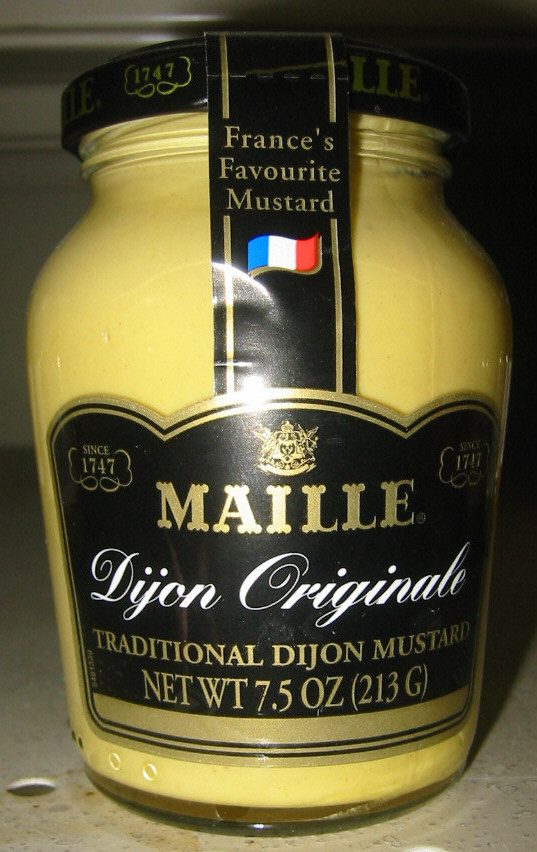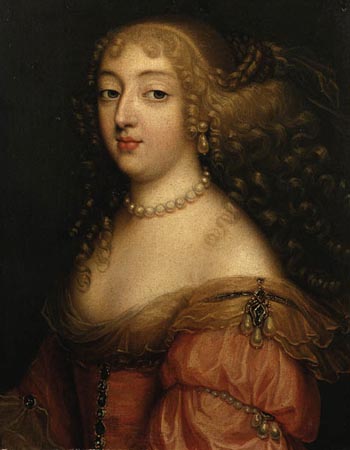|
Nicolas Quentin
Nicolas Quentin (died 1636) was a French historical painter. Quentin lived at Dijon, and died there in 1636. His life has been too much neglected by biographers and critics, for his work had considerable originality. He appears to have had no regular master. The compiler of the catalogue of the Dijon Museum asserts that Nicolas Poussin Nicolas Poussin (, , ; June 1594 – 19 November 1665) was a French painter who was a leading painter of the classical French Baroque style, although he spent most of his working life in Rome. Most of his works were on religious and mythologic ..., passing through Dijon and seeing his ''Communion of St. Catherine'', exclaimed that if Quentin understood his own interests, and went to Italy for improvement, he would make his fortune. References * 1636 deaths 17th-century French painters French male painters Artists from Dijon Year of birth unknown People from the Province of Burgundy {{France-painter-stub ... [...More Info...] [...Related Items...] OR: [Wikipedia] [Google] [Baidu] |
Historical Painting
History painting is a genre in painting defined by its subject matter rather than any artistic style or specific period. History paintings depict a moment in a narrative story, most often (but not exclusively) Greek and Roman mythology and Bible stories, opposed to a specific and static subject, as in portrait, still life, and landscape painting. The term is derived from the wider senses of the word ''historia'' in Latin and ''histoire'' in French, meaning "story" or "narrative", and essentially means "story painting". Most history paintings are not of scenes from history, especially paintings from before about 1850. In modern English, "historical painting" is sometimes used to describe the painting of scenes from history in its narrower sense, especially for 19th-century art, excluding religious, mythological, and allegorical subjects, which are included in the broader term "history painting", and before the 19th century were the most common subjects for history paintings. ... [...More Info...] [...Related Items...] OR: [Wikipedia] [Google] [Baidu] |
Dijon
Dijon (, ; ; in Burgundian language (Oïl), Burgundian: ''Digion'') is a city in and the Prefectures in France, prefecture of the Côte-d'Or Departments of France, department and of the Bourgogne-Franche-Comté Regions of France, region in eastern France. the Communes of France, commune had a population of 156,920. The earliest archaeological finds within the city limits of Dijon date to the Neolithic Period (geology), period. Dijon later became a Roman Empire, Roman settlement named ''Divio'', located on the road between Lyon and Paris. The province was home to the Duke of Burgundy, Dukes of Burgundy from the early 11th until the late 15th centuries, and Dijon became a place of tremendous wealth and power, one of the great European centres of art, learning, and science. The city has retained varied architectural styles from many of the main periods of the past millennium, including Capetian, Gothic architecture, Gothic, and Renaissance architecture, Renaissance. Many still-i ... [...More Info...] [...Related Items...] OR: [Wikipedia] [Google] [Baidu] |
Dijon Museum
Dijon (, ; ; in Burgundian: ''Digion'') is a city in and the prefecture of the Côte-d'Or department and of the Bourgogne-Franche-Comté region in eastern France. the commune had a population of 156,920. The earliest archaeological finds within the city limits of Dijon date to the Neolithic period. Dijon later became a Roman settlement named ''Divio'', located on the road between Lyon and Paris. The province was home to the Dukes of Burgundy from the early 11th until the late 15th centuries, and Dijon became a place of tremendous wealth and power, one of the great European centres of art, learning, and science. The city has retained varied architectural styles from many of the main periods of the past millennium, including Capetian, Gothic, and Renaissance. Many still-inhabited townhouses in the city's central district date from the 18th century and earlier. Dijon's architecture is distinguished by, among other things, '' toits bourguignons'' (Burgundian polychrome roofs) ... [...More Info...] [...Related Items...] OR: [Wikipedia] [Google] [Baidu] |
Nicolas Poussin
Nicolas Poussin (, , ; June 1594 – 19 November 1665) was a French painter who was a leading painter of the classical French Baroque style, although he spent most of his working life in Rome. Most of his works were on religious and mythological subjects painted for a small group of Italian and French collectors. He returned to Paris for a brief period to serve as First Painter to the King under Louis XIII and Cardinal Richelieu, but soon returned to Rome and resumed his more traditional themes. In his later years he gave growing prominence to the landscape in his paintings. His work is characterized by clarity, logic, and order, and favors line over color. Until the 20th century he remained a major inspiration for such classically-oriented artists as Jacques-Louis David, Jean-Auguste-Dominique Ingres and Paul Cézanne. Details of Poussin's artistic training are somewhat obscure. Around 1612 he traveled to Paris, where he studied under minor masters and completed his ea ... [...More Info...] [...Related Items...] OR: [Wikipedia] [Google] [Baidu] |
1636 Deaths
Events January–March * January 1 – Anthony van Diemen takes office as Governor-General of the Dutch East Indies (now Indonesia), and will serve until his death in 1645. * January 18 – '' The Duke's Mistress'', the last play by James Shirley, is given its first performance. * February 21 – Al Walid ben Zidan, Sultan of Morocco, is assassinated by French renegades. * February 26 – Nimi a Lukeni a Nzenze a Ntumba is installed as King Alvaro VI of Kongo, in the area now occupied by the African nation of Angola, and rules until his death on February 22, 1641. * March 5 (February 24 Old Style) – King Christian IV of Denmark and Norway gives an order, that all beggars that are able to work must be sent to Brinholmen, to build ships or to work as galley rowers. * March 13 (March 3 Old Style) – A "great charter" to the University of Oxford establishes the Oxford University Press, as the second of the privileged presses in England. * M ... [...More Info...] [...Related Items...] OR: [Wikipedia] [Google] [Baidu] |
17th-century French Painters
The 17th century lasted from January 1, 1601 (represented by the Roman numerals MDCI), to December 31, 1700 (MDCC). It falls into the early modern period of Europe and in that continent (whose impact on the world was increasing) was characterized by the Baroque cultural movement, the latter part of the Spanish Golden Age, the Dutch Golden Age, the French '' Grand Siècle'' dominated by Louis XIV, the Scientific Revolution, the world's first public company and megacorporation known as the Dutch East India Company, and according to some historians, the General Crisis. From the mid-17th century, European politics were increasingly dominated by the Kingdom of France of Louis XIV, where royal power was solidified domestically in the civil war of the Fronde. The semi-feudal territorial French nobility was weakened and subjugated to the power of an absolute monarchy through the reinvention of the Palace of Versailles from a hunting lodge to a gilded prison, in which a greatly expande ... [...More Info...] [...Related Items...] OR: [Wikipedia] [Google] [Baidu] |
French Male Painters
French may refer to: * Something of, from, or related to France ** French language, which originated in France ** French people, a nation and ethnic group ** French cuisine, cooking traditions and practices Arts and media * The French (band), a British rock band * "French" (episode), a live-action episode of ''The Super Mario Bros. Super Show!'' * ''Française'' (film), a 2008 film * French Stewart (born 1964), American actor Other uses * French (surname), a surname (including a list of people with the name) * French (tunic), a type of military jacket or tunic * French's, an American brand of mustard condiment * French (catheter scale), a unit of measurement * French Defence, a chess opening * French kiss, a type of kiss See also * France (other) * Franch, a surname * French Revolution (other) * French River (other), several rivers and other places * Frenching (other) Frenching may refer to: * Frenching (automobile), recessing or moul ... [...More Info...] [...Related Items...] OR: [Wikipedia] [Google] [Baidu] |
Artists From Dijon
An artist is a person engaged in an activity related to creating art, practicing the arts, or demonstrating the work of art. The most common usage (in both everyday speech and academic discourse) refers to a practitioner in the visual arts only. However, the term is also often used in the show business, entertainment business to refer to Actor, actors, Musician, musicians, Singing, singers, Dance, dancers and other Performing arts#Performers, performers, in which they are known as ''Artiste'' instead. ''Artiste'' (French) is a variant used in English in this context, but this use has become rare. The use of the term "artist" to describe Writer, writers is valid, but less common, and mostly restricted to contexts such as critics' reviews; "author" is generally used instead. Dictionary definitions The ''Oxford English Dictionary'' defines the older, broader meanings of the word "artist": * A learned person or Master of Arts * One who pursues a practical science, traditionally ... [...More Info...] [...Related Items...] OR: [Wikipedia] [Google] [Baidu] |
Year Of Birth Unknown
A year is a unit of time based on how long it takes the Earth to orbit the Sun. In scientific use, the tropical year (approximately 365 solar days, 5 hours, 48 minutes, 45 seconds) and the sidereal year (about 20 minutes longer) are more exact. The modern calendar year, as reckoned according to the Gregorian calendar, approximates the tropical year by using a system of leap years. The term 'year' is also used to indicate other periods of roughly similar duration, such as the lunar year (a roughly 354-day cycle of twelve of the Moon's phasessee lunar calendar), as well as periods loosely associated with the calendar or astronomical year, such as the seasonal year, the fiscal year, the academic year, etc. Due to the Earth's axial tilt, the course of a year sees the passing of the seasons, marked by changes in weather, the hours of daylight, and, consequently, vegetation and soil fertility. In temperate and subpolar regions around the planet, four seasons ar ... [...More Info...] [...Related Items...] OR: [Wikipedia] [Google] [Baidu] |





